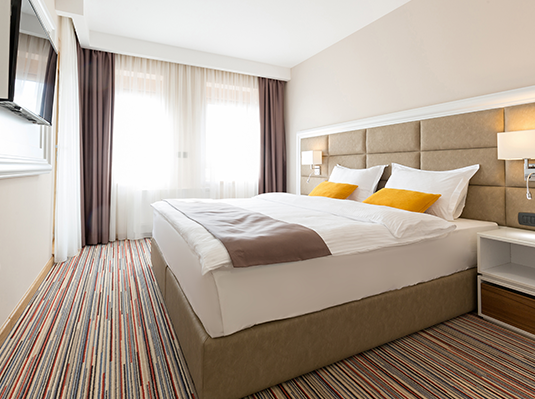
Homeowners insurance policies can absolutely cover a hotel stay, but don’t start planning a vacation just yet! Hotel stays are typically only covered by your homeowners insurance in the event of a covered loss. This means if your home was damaged and you need a place to live while it is being repaired, your policy will pay for temporary housing, whether that is a hotel, or temporary apartment.
Does homeowners insurance cover temporary housing?
Most homeowners insurance policies include coverage for temporary housing while your home is being repaired. This coverage is referred to as additional living expenses coverage, which may appear on your policy as coverage D, or loss of use coverage.
Temporary living expenses aren’t just for hotel rooms — hotels, apartments, and other housing options can be paid for by your homeowners insurance if you aren’t able to live in your own home because of damages caused by a covered peril. Depending on your policy, you might also be eligible for this benefit if you are evacuated from your home because it is in danger of being damaged by a covered peril. For example, if your home is in the path of a wildfire, you may be covered for evacuation even if your home has not been damaged yet.
What is additional living expenses coverage?
Additional living expenses coverage pays for any expenses you would not have if you had access to your home. These expenses may include:
- Hotel room
- Temporary apartment rental
- Pet boarding
- Restaurant meals
- Storage fees for your belongings
- Laundry expenses
- Gas and mileage for a longer commute to work
How much does insurance cover for a hotel?
The good news is that your policy generally says you are entitled to stay in a place that is comparable to your home, so you won’t have to cram your entire family into a tiny hotel room. The bad news is that your additional living expenses benefit has limits. A standard policy offers up to 20% of your dwelling benefit for additional living expenses or a time limit of 12 months, whichever comes first. For example, if your home is insured for $400,000, you will have up to $80,000 to help you live elsewhere while your home is being repaired. Homeowners insurance hotel coverage isn’t infinite, so you will need to move quickly to get your home repaired.
The specifics of your additional living expenses coverage will be unique to your policy, so it is important to review these benefits with your insurance company to make sure you understand them. If you have questions about your coverage you can always reach out to our experts at Goosehead Insurance for more information.
How much loss of use coverage do I need?
You need enough loss of use coverage to provide adequate housing to your family in the event that you suffer a total loss and need to rebuild your house from the ground up. Most policies cap your additional living expenses benefit at 20% of your dwelling coverage, but if you have reason to believe that this won’t be enough to cover your needs you may want to talk to your agent about the possibility of expanding this benefit.
It is important to take stock of what is and is not considered a covered peril on your policy when reviewing your additional living expenses benefit. For example, most policies don’t cover damage from earthquakes or flooding, which means you may want to consider purchasing an endorsement to cover your property in those situations if you live in an area where that is a concern. Some common exclusions are:
- War
- Nuclear disaster
- Wear and tear
- Rust
- Mold
- Intentional actions
- Government actions
- Earthquake
- Flood
Is loss of use coverage included on renters insurance?
Loss of use coverage is generally included in your renters insurance policy, but the coverage is handled a little differently than a homeowners policy. A renters insurance loss of use benefit will have a cap on the amount of available coverage, but it isn’t based on your dwelling coverage because you don’t own the property. Your policy will have a different process for determining the maximum benefit amount, so check with your agent and determine if you have enough coverage to pay for your needs if you find yourself suddenly unable to live in your home due to a covered loss.
How do I claim loss of use insurance?
First, you need to file a claim for the actual damage to your home. After you have gone through that process your insurance agent can help guide you through the process of filing a loss of use claim. You will need to remember to continue making your mortgage payments and keep any receipts for additional living expenses so you can be reimbursed by your insurance company when you file your claim. As a Goosehead client, you're able to call our claims team at (866) 260-5151, or chat with us below to begin the process.
The contents of this article are for informational purposes only. You should not act or refrain from acting based on this information without first consulting a Goosehead licensed agent at [email protected]. We disclaim all liability for actions taken or not taken by you based on the contents of this article which is provided "as is." Goosehead makes no representation that this content is error-free.

